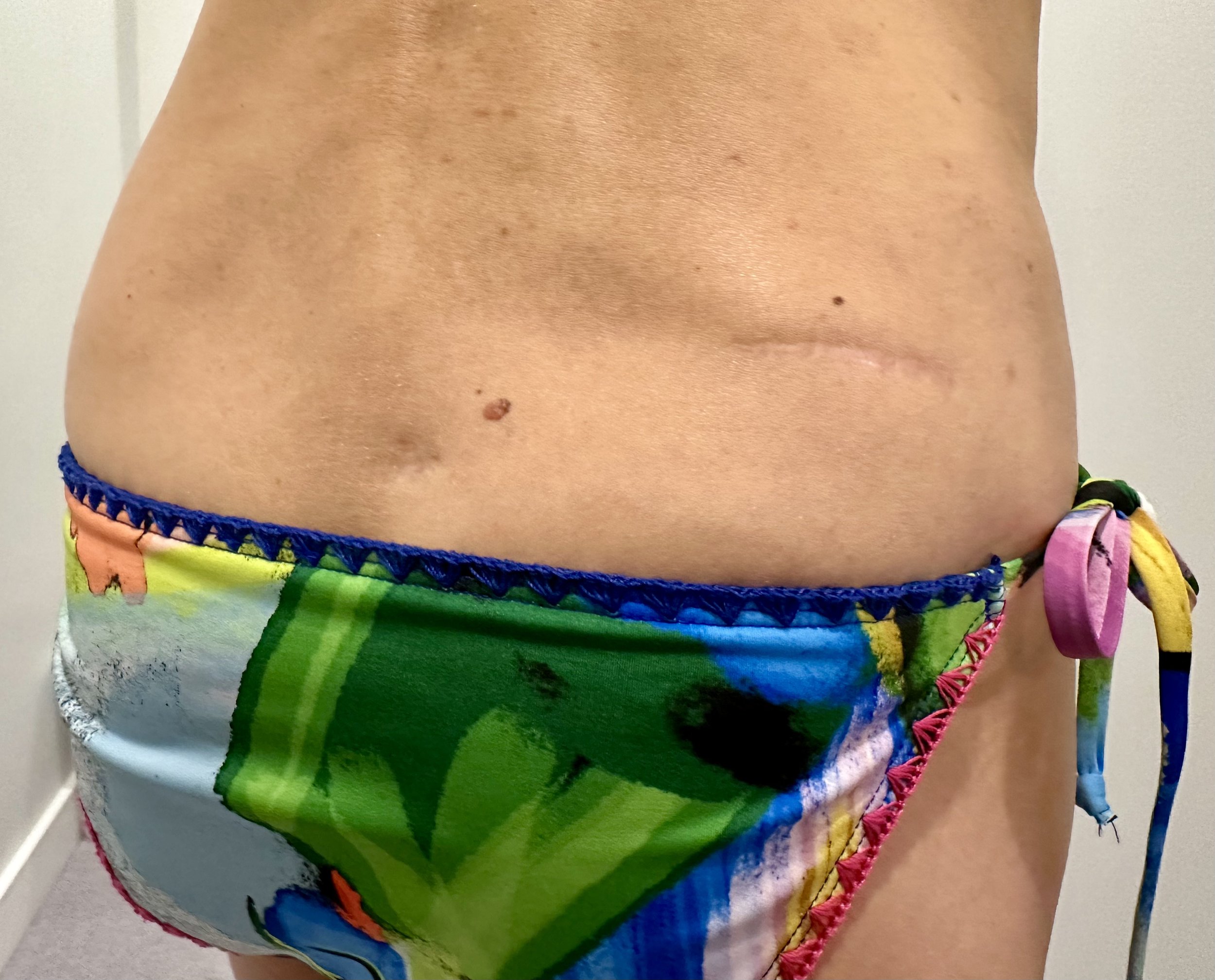My experience of Sacral Nerve Stimulation
Sacral nerve stimulation (SNS) or sacral neuromodulation (SNM) is becoming an increasingly offered treatment for the management of faecal incontinence for women following childbirth injury. I am often asked about my experience of this treatment which prompted me to write this blog and what I would consider if I was offered this treatment now.
My experience with Sacral Nerve Stimulation
My first permanent sacral nerve stimulation or SNS device was inserted in 2007 for Faecal Incontinence (FI). I was one of the first four people at the hospital where I was a patient to trial and receive treatment using sacral nerve stimulation, also known as sacral neuromodulation.
Under local anaesthetic a temporary device was fitted and worn for two weeks, I tracked my bowel movements to see if the treatment could improve my bowel control and following the results I was encouraged to have a permanent implant.
Initially, the results were good. I had an improved awareness of sensation when I wanted to evacuate my bowel. This gave me a little more time to help manage the urgency I was experiencing and reduced the frequency of being incontinent.
However, 18 months later the device failed and overnight my symptoms returned. After testing the impedance levels it was confirmed the device wasn’t functioning and it couldn’t be re-programmed.
In 2010 the device was fully removed, and the original battery site was left to heal. When the initial device was implanted, the battery was positioned very low in my right buttock which was very uncomfortable especially when driving.
I had new device implanted three months later where a new battery pocket was created higher up in my right buttock. The insertion of a new device required access to a different sacral port from the one originally used to connect the leads into the sacral nerves. There are four sacral nerves S1 - 4 accessed through the sacral foramen.
Initially my device was inserted into S1 but was now using S3. This change in port may be part of the reason I failed to get the same efficacy as I had with the original stimulator that was implanted.
In 2013, I had further revision surgery as the right tined lead failed and was replaced. Prior to this I had experienced shocks from the device that radiated into my buttock, and I was advised to turn the device off and leave it dormant.
I also experienced significant central lower back pain when the devices were both active, switched off and dormant. Interestingly, this backache subsided after my last device was removed.
I was extremely careful to avoid movements that caused excessive spinal flexion and extension or rotation, particularly when the leads where initially implanted as I wanted to minimise the risk of damaging them.
However, despite my best efforts the devices continued to have problems with malfunctioning that required multiple revision surgeries. Each surgery was performed under general anaesthetic and required time off from work to recover and I couldn’t drive for a few weeks. I also couldn’t have an MRI as the devices at that time were not compatible, this has since changed.
The original success could not be replicated. This was my primary reason for opting in 2015 to have my last permenant device fully removed rather than try another lead change.
In 2017, as a last resort I was persuaded to try one final attempt with SNM at a different hospital as I knew I was possibly facing stoma surgery. I trialled another temporary device but it had no effect on my symptoms. Sacral neuromodulation was no longer a viable treatment option for me.
Despite having the devices explanted, I have developed in recent years and inherited residual nerve pain over the upper battery pocket scar site which causes me significant discomfort and problems. This started with a radiating pain from the central sacral area across to the right gluteus medius muscle. I have a constant battle with managing this nerve pain which can affect my sleep, my lower back muscles on the right-hand side and over tightens my right gluteal muscles. I would describe this pain like a persistant tooth ache from which there is little respite and if a catch the wrong angle I’ll get a jolting sensation.
I have had extensive physiotherapy, consulted a pain specialist, and tried myofascial release but I have not found a solution to resolve this issue.
There is not much interest in exploring problems once the devices are removed. If you happen to be reading this and have either experienced this or have an idea on how to resolve this pain, I would be interested in hearing from you.
Would I recommend SNS?
Although my experience with SNS was not as positive as I hoped it would be, I recognise that it may be viable treatment for you.
If you are considering SNS/SNM I would suggest the following:
Trial a temporary device before going ahead with a permanent implant
When trialling a temporary SNS / SNM, trial it in isolation of other management options so you know if it is actually helping you control your symptoms and keep an accurate bowel diary.
Questions I would ask
How many devices has the person performing your procedure implanted and over what period of time?
How many patients are they currently treating with SNS / SNM who have your symptoms?
What is their surgical revision rate and what complications related to the procedure and the devices have they had to manage?
What follow up provision is there in terms of SNS / SNM clinic? Who do you contact if you have a problem?
If you’re having your treatment privately, ask if the long term management is covered under your treatment plan? Are you referred you to an SNS / SNM clinic and is this covered?
What impact does SNS / SNM have on neuropathic pain?
